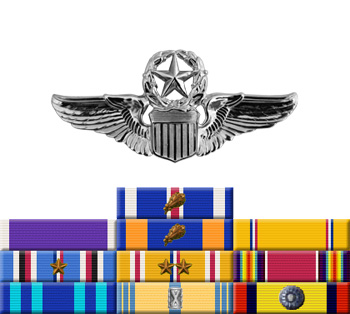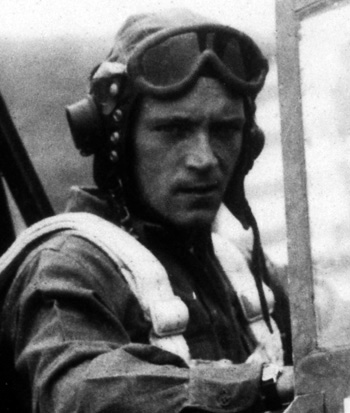
|
Raymond L. Callaway |
 |
|||
| Rank, Service | ||||
Lieutenant Colonel O-5, U.S. Air Force |
||||
| Veteran of: | ||||
|
||||
| Tribute: | ||||
Ray Callaway was born on April 12, 1916, in Granite Falls, Minnesota. He enlisted in the Aviation Cadet Program of the U.S. Army Air Corps on April 25, 1941, and was commissioned a 2d Lt and awarded his pilot wings at Foster Field, Texas, on December 12, 1941. Lt Callaway served as a P-36 Hawk and P-38 Lightning pilot on coastal patrol with the 56th Fighter Group at Mitchel Field, New York, from December 1941 to August 1942, and then served as an instructor pilot with the 326th Fighter Group at Westover Field, Massachusetts, from August 1942 to June 1943. He then deployed to India, where he trained Chinese pilots while assigned to the 8th Fighter Squadron of the 3rd Fighter Group from November 1943 to January 1944. Capt Callaway began flying combat missions with the 8th Fighter Squadron in China in January 1944, and was credited with the destruction of 6 enemy aircraft in aerial combat, plus 1 probable and 2 damaged, before returning to the U.S. in January 1945. During this time, he commanded the 32nd Fighter Squadron of the 3rd Fighter Group from September to December 1944. After returning to the U.S. he served as commander of the 399th Fighter Squadron of the 369th Fighter Group at Stuttgart AAF, Arkansas, from February 1945 until he left active duty on September 5, 1945. Col Callaway remained in the Air Force Reserve after the war, and retired on February 1, 1967. He died on February 19, 2005, and was buried at the Itasca Calvary Cemetery in Grand Rapids, Minnesota. |
||||
|
||||

